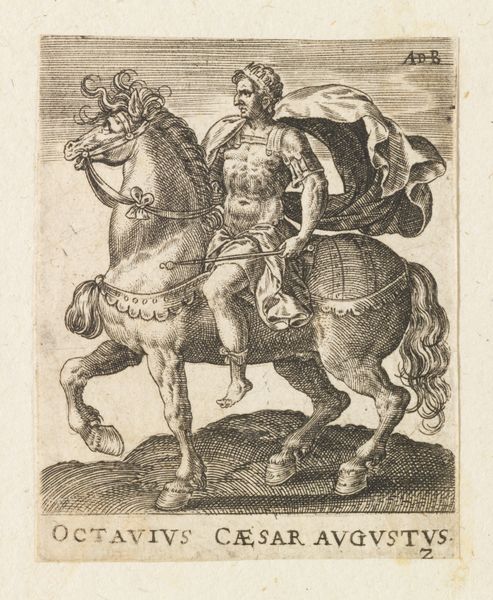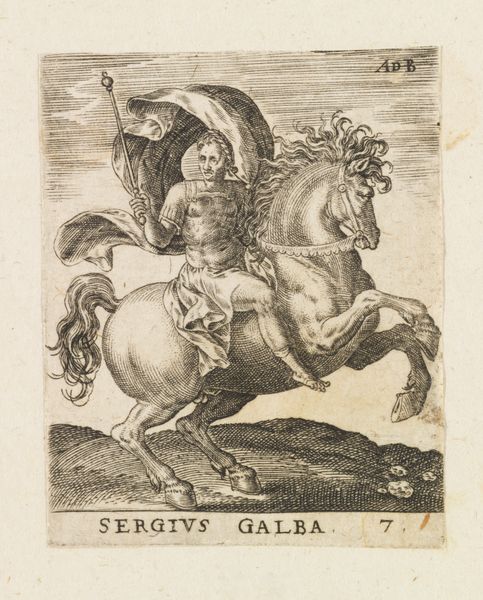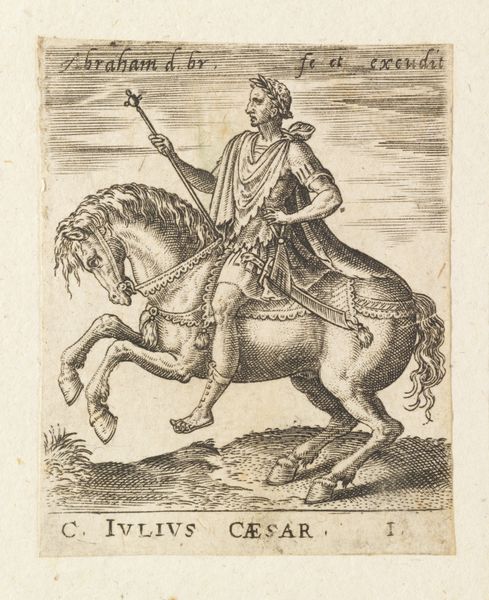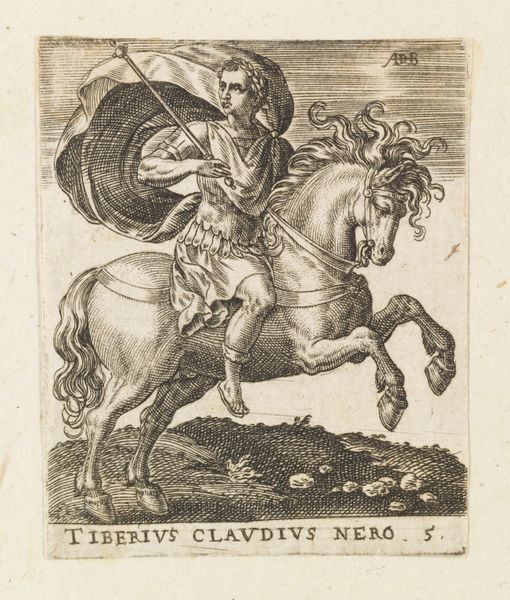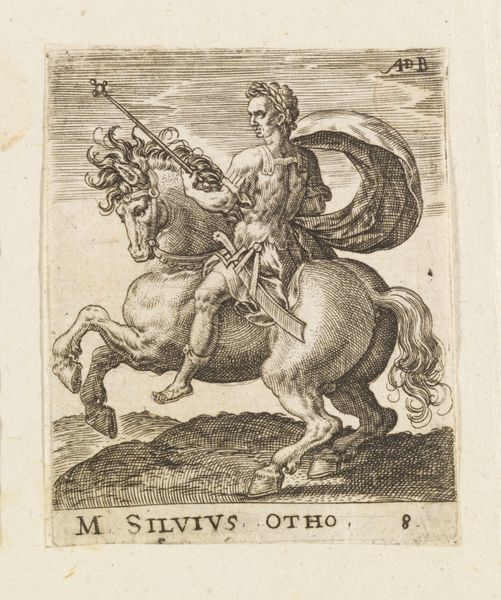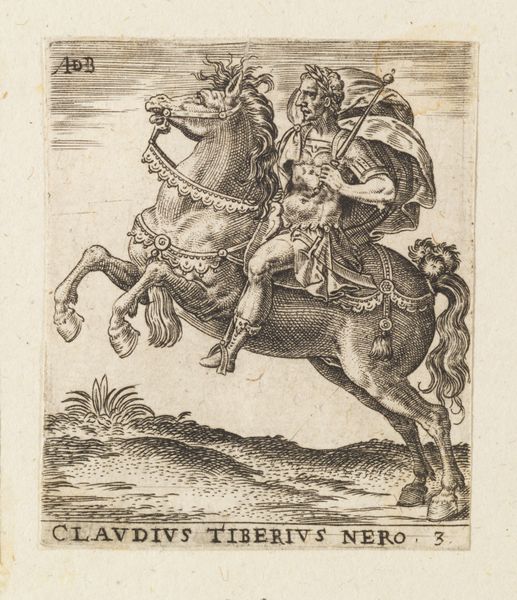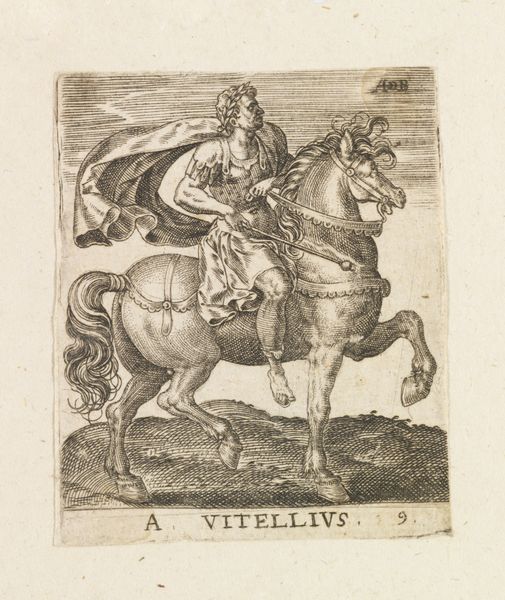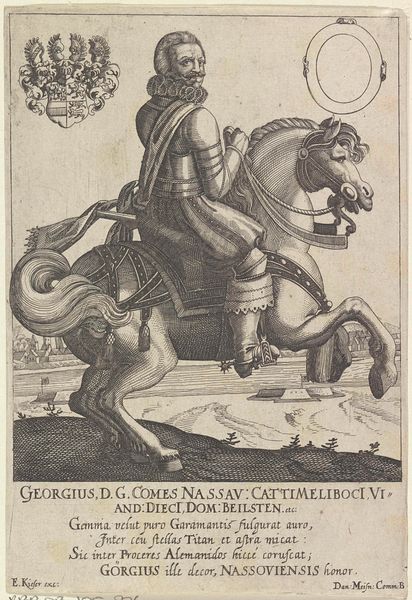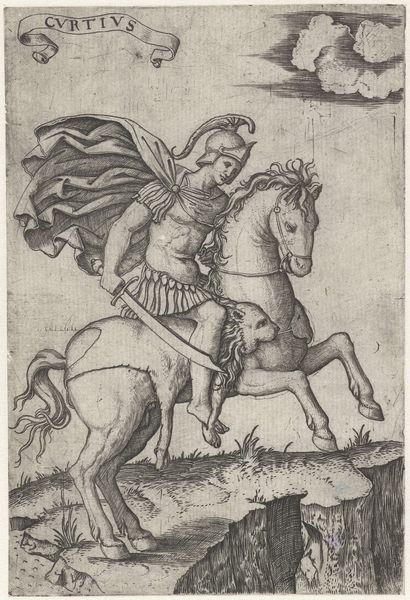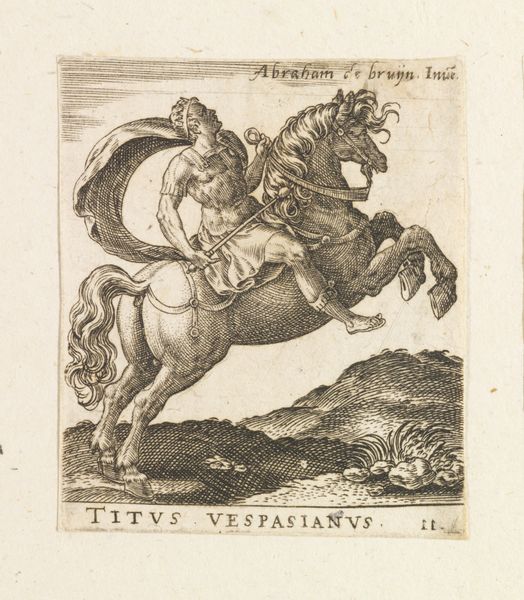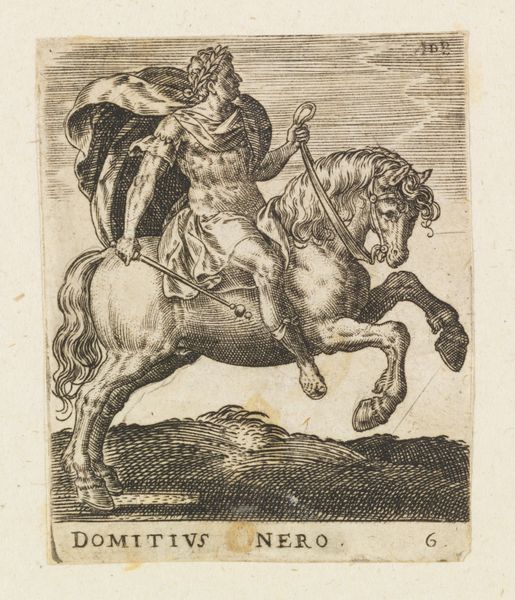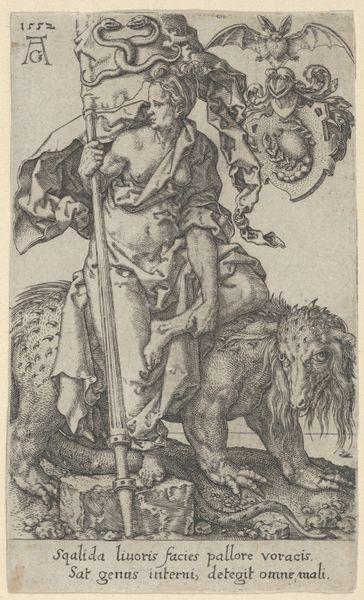
Caius Caesar Galigula, from "Twelve Caesars on Horseback" 1565 - 1587
0:00
0:00
drawing, print, engraving
#
portrait
#
drawing
# print
#
old engraving style
#
figuration
#
ancient-mediterranean
#
line
#
history-painting
#
engraving
Dimensions: Sheet: 2 7/16 × 1 7/8 in. (6.2 × 4.8 cm)
Copyright: Public Domain
Curator: Abraham de Bruyn created this engraving titled "Caius Caesar Galigula, from 'Twelve Caesars on Horseback'" sometime between 1565 and 1587. It’s currently part of the collection at the Metropolitan Museum of Art. Editor: My immediate reaction is to the stark contrast. The crisp lines create a very powerful, almost austere image despite the flourish of the subject matter. It speaks volumes about the printmaking process. Curator: Absolutely, and the choice of representing Caligula—a figure historically marred by tyranny and excess—invites a fascinating intersectional reading. The engraving becomes not just a historical record, but also commentary on power, masculinity, and moral corruption. Editor: Exactly. Consider the labor involved in producing each print, and then think about the social hierarchy that positions the artisan as less valuable than the historical figure they represent. There's an inherent tension in the materiality itself. Curator: The image perpetuates a very specific classical aesthetic ideal, likely embraced at the courts of Europe, particularly focusing on an exaggerated masculinity of the elite in power. It reinforces the idea of the ruler as not only powerful but almost divinely appointed through that carefully constructed image. How complicit were the image-makers themselves? Editor: It forces us to look at the systems of labor and value operating at the time. The material value of the print versus the projected image of power held by the emperor highlights how the act of creation is fundamentally enmeshed within societal norms and political ideologies. I also can’t help but think about its influence across centuries—how this image, multiplied and distributed, contributes to the construction of "Caligula" as a type. Curator: And within that "type", there are specific codes around gender performance and political maneuvering that persist to this day, as we saw so dramatically played out, for instance, by the 45th President of the United States. Editor: Right. Ultimately, by considering its materials and production, and understanding the artist's place in the process, the image presents more complex reflections about political control, than might be originally visible on its surface. Curator: Precisely. This deeper understanding helps me as an activist not just appreciate this artwork as an object but examine my place within history, art, gender studies, race, and sociology. Editor: By foregrounding material concerns, this small print becomes an interesting focal point for broader economic and ideological conditions. It is more than just "an image of power" – it's an example of how power is actually built and circulated.
Comments
No comments
Be the first to comment and join the conversation on the ultimate creative platform.
